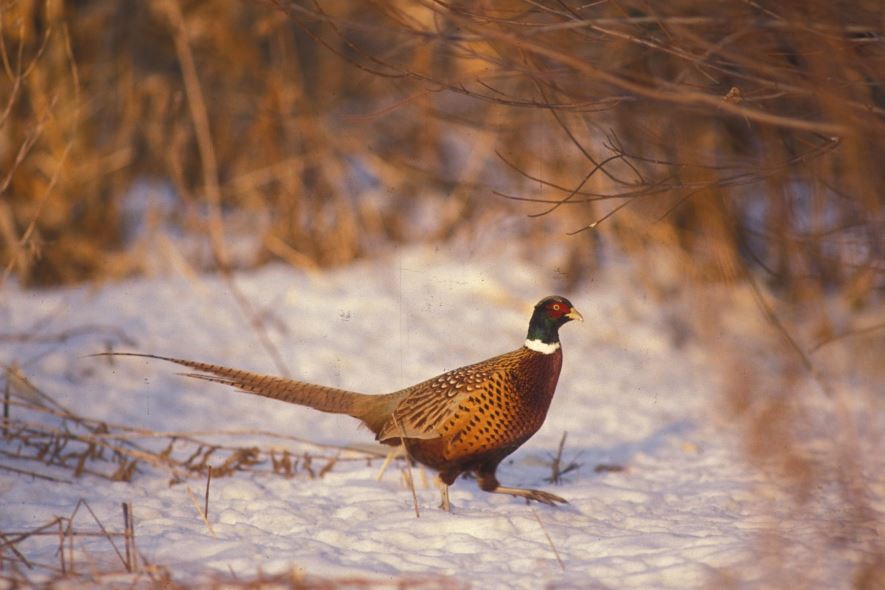WINTER IS ALL ABOUT HABITAT AND SURVIVAL FOR RING-NECKED PHEASANTS. HERE'S WHAT BIRDS NEED TO COME OUT THE OTHER SIDE ALIVE.
Story by Jim Wooley, Pheasants Forever Biologist Emeritus. Lead photo by Lon Lauber.
Winter on the prairie is a beautiful but deadly time of year. Last February was particularly vicious. Serial blizzards and bitter cold battered wildlife. Many people wondered if any pheasants would escape to rebuild populations.
A thin margin of survivors did just that, though summer brood surveys traced the expected declining trendline. In Iowa and South Dakota, numbers dropped 17 percent – hardly a surprise. But it could have been worse.
Winter is normally marked by high pheasant mortality. Birds die incrementally (predation), catastrophically (blizzards), and less often from exposure or starvation. January and February are the tightrope walk. Fall’s extravagance of food is gone. Bitter cold reigns over hostile landscapes as habitat fills with snow. Waste grain provides reliable rations only if snow and ice don’t lock the pantry. How do pheasants manage to survive?
Cold temperatures alone don’t bother pheasants. The birds simply adapt physiologically and behaviorally. When food is abundant, they lay down subcutaneous fat (10-15% of body weight) -- critical when birds can’t feed for days during blizzards. But fat reserves and warm feathers aren’t enough. Pheasants need dense habitat that breaks the wind and stops the snow, along with nearby food.
Pheasants require 30 to 40 percent more food in winter than in early fall, which means that birds sometimes must forage far from safe cover. That’s why it makes sense to place corn or sorghum food plots near protective woody shelter and roosting cover. With the kitchen next to the bedroom, pheasants can grab a bite without risking travel.

Snow, driven by high winds, is the most serious winter threat for both wildlife and people. Multi-row coniferous shelterbelts around farmsteads keep snow out and create a favorable microclimate that reduces energy needs by 30-plus percent. Dense winter roosting habitats (cattail marshes, native grasses and beefy shelterbelts) do the same thing for pheasants, blunting wind-chill and blizzards. To appreciate that, stand upright in switchgrass in a shrieking, sub-zero wind. Now get horizontal. The microclimate at pheasant level is downright balmy by comparison.
A little snow on top of gently folded cattails or native grass may add insulation for roosting birds. Deep snow, however, provides no benefits, since ringnecks do not snow-roost (dive into soft drifts to escape the elements like ruffed grouse). Indeed, snow that fills roosting habitat and covers food is serious trouble. Birds forced into marginal cover are vulnerable to wind-driven snow and windchill. They die from exposure as snow blown beneath feathers thaws and refreezes, making thermoregulation impossible. Some birds suffocate in blizzards as ice blocks their airways.
Well-designed winter habitat has just one objective: delivering maximum numbers of birds to breeding season in peak condition. So what’s important? Cattails and native grasses for roosting? Multi-row, conifer/shrub shelterbelts for blizzard protection and emergency cover? Nearby food plots that reduce travel and boost body condition?
The answer is yes, you need them all – a winter cover complex. Just get going on it. The best time to plant was yesterday. The next best time is tomorrow.